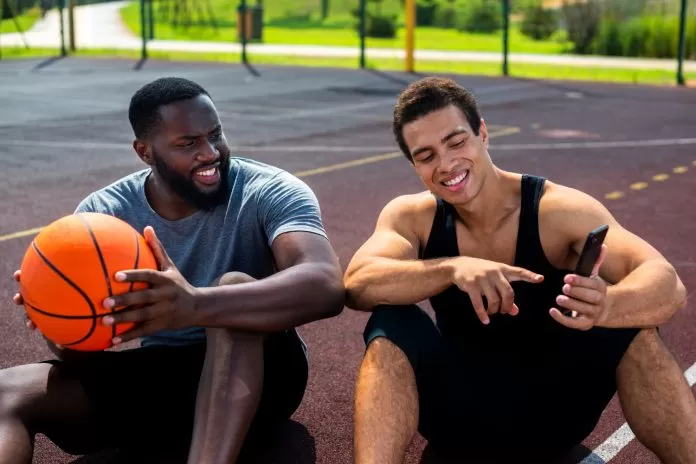Smartphones and mobile devices in general have come to make our lives so much easier. Thanks to smartphones and tablets, we can now do virtually everything from the comfort of our couches at home or on the go. You can work remotely instead of reporting to a physical office or shop for electronics, groceries, and household items without having to visit a store. Likewise, through licensed platforms like Verde casino online, if you are into gambling games, you can enjoy your favorite games on your device instead of planning a trip to a brick-and-mortar venue.
As convenient and efficient as this is, we sometimes end up spending so much time on our smartphones that it ends up being detrimental to our health. More people are finding themselves in physical therapy clinics with an aching neck because of spending hours scrolling on smartphones, low in their laps. Flexing forward for hours nonstop causes a massive strain on the neck, and unfortunately, people rarely connect their pain to their phones. What sounds like a niche problem for pro gamers and streamers is quickly becoming a general issue across demographics.
We Just Can’t Put Our Phones Down
As we speak, more than six billion people worldwide now have smartphone subscriptions. This translates to billions glued to at least one device at any given moment. In the U.S. alone, data shows that the average person spends about four and a half hours each day using their phone. That’s hardly surprising when you think about how much we depend on these devices.
Apple and Samsung dominate the market. Users of both brands squeeze every ounce of performance from their devices. Studies suggest iPhone owners interact with their phones slightly more, but in truth, both groups are highly engaged. Our phones have replaced cameras, radios, TVs, and even gaming consoles. They guide us when we’re lost and help us shop with a few taps.
But that constant typing and scrolling come at a cost. Overuse can cause hand strain or minor injuries that are becoming increasingly common as smartphone use grows. Technique and text claw are the most common problems.
Your Screen Time Could Be Hurting Your Neck
Tech neck is everywhere. This condition happens when we bend over our phones or laptops for too long, forcing our neck and shoulder muscles to hold up our heavy heads in awkward positions.
An upright head weighs only about 10 to 12 pounds. However, the pressure on your neck increases to around 50 to 60 pounds when you tilt it forward by 45 to 60 degrees. That’s like carrying a small child around your neck all day. This strain weakens muscles and ruins posture over time. It could leave you stiff and sick. Fortunately, you can easily save your neck from strain by focusing on posture and keeping your neck muscles strong.
The natural, stress-free position is a neutral posture. Look straight ahead, with your head lined up with your shoulders and hips. Your back should be straight, and your neck should be relaxed. The following small tweaks can make a huge difference for anyone chained to a desk:
- Position your monitor or screen at eye level to avoid bending your neck.
- Add a lumbar support pad to help keep your spine upright.
- Check your eyesight regularly and sit about 20–40 inches from your screen.
- Take breaks every 20–30 minutes to move, stretch, and rest your eyes.
- Incorporate practical neck and shoulder stretches into your day to keep tension away.
What Is Text Claw?
Text claw isn’t an official medical term. It’s the nickname people give to the aching and tingling that come from heavy smartphone use. It happens when the small muscles and tendons in your fingers and forearms get overworked from handling your phone for long stretches. Some common signs of text claw include:
- Cramping or stiffness in the thumb after long periods of typing or swiping.
- Tingling or pins-and-needles in the hand or wrist that can make it hard to grip things.
- Sore elbow or finger joints from repetitive motion.
- Muscle spasms that flare up unexpectedly.
- Mild numbness, especially in the pinky and ring fingers.
Does this sound familiar? If you’ve ever put your phone down and noticed your hand felt tight or sore, you’ve likely experienced a mild case of text claw. It is more of an annoyance than a real danger most of the time. However, the condition can become serious if left unattended. Texting requires the use of tiny muscles in your hands and fingers repeatedly. Some symptoms can feel a lot like cubital tunnel syndrome. This illness happens when the ulnar nerve along the inside of the elbow gets pinched or irritated.
How to Prevent Text Claw
You don’t have to ditch your phone to avoid text claw. Just make small changes in how you use your device. These include:
- Keep messages short to reduce typing strain.
- Switch fingers by holding the phone with one hand and typing with the other.
- Go hands-free by using Bluetooth or headphones for calls.
- Try voice-to-text to give your fingers a break.
- Take breaks often to stretch and rest your hands.
Other Effects of Smartphone Addiction
Tech neck and text claw are just examples of conditions resulting from smartphone overuse. This addiction is also associated with the following issues:
Hunched Back
Long hours staring at your phone or screen can curve your back and neck without you even noticing. Your muscles work overtime just to hold your head in this new position, leaving you with a strained and tired posture.
The 90-Degree Elbow
Every day smartphone use can bend the elbow at a 90-degree angle. This is what is called a ‘smartphone elbow.’ This posture stretches the nerves and can weaken your hands gradually.
Thicker Skull and Smaller Brains
Smartphone radiation may have long-term effects on your body. WHO reported that this radiation is possibly carcinogenic. Some studies propose that in the future, humans might develop a thicker skull to protect against this type of harm, but with a tradeoff, or rather drawback smaller brain inside. Additionally, reduced intellectual demands as a result of overreliance on technology could shrink our cognitive capacity and brain size.
A Second Eyelid
From what scientists are saying, human eyes may end up evolving to handle screen strain that we are exposed to consistently due to increased mobile device usage. So, as a result, future humans could develop a larger inner eyelid to reduce light exposure and protect against headaches and eye strain.
Looking Ahead at Long-Term Effects
While there are physical changes that may happen to our bodies to protect ourselves from consistent mobile device use, evolution doesn’t happen overnight. It builds up over generations of constant smartphone use. But the good news is that tech neck and text claw can still be prevented. People can protect themselves from long-term strain by being mindful of posture and using phones more intentionally. Fortunately, you now know what causes these problems and how to stop them before they become permanent.









